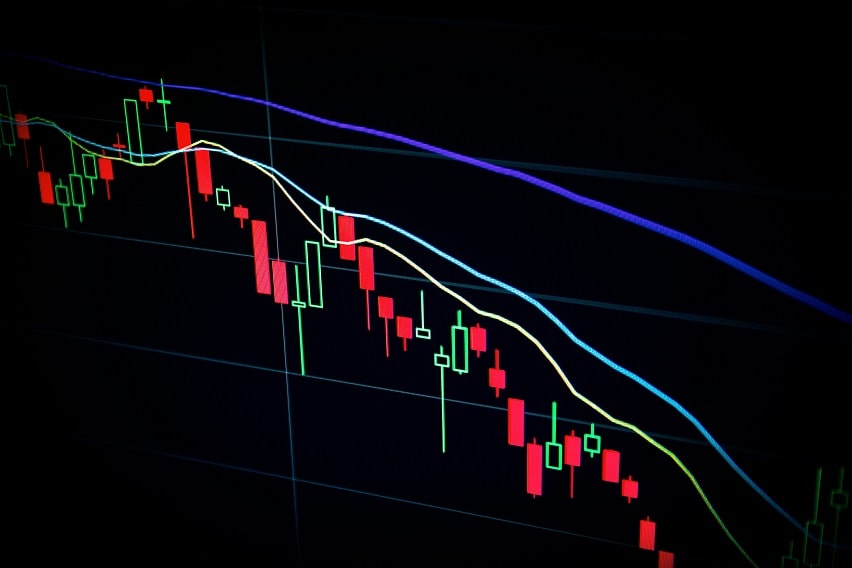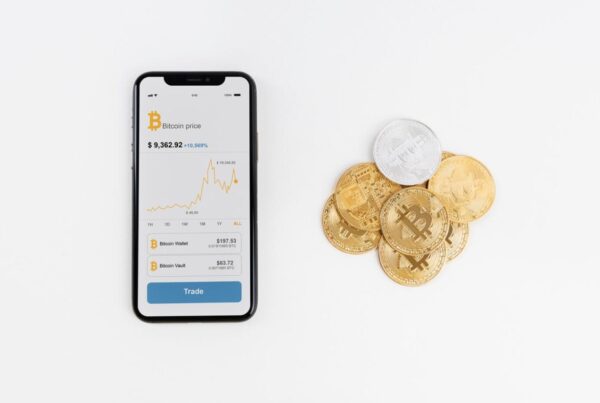Cardano vs Ethereum is one topic that has dominated online and offline conversations in recent years. Both blockchain technologies have disrupted the traditional financial system, offering users the opportunity to use a decentralized digital currency and create smart contracts. Despite their similarities, Cardano and Ethereum are two distinct projects with different objectives.
Cardano and Ethereum have their own cryptocurrency – ADA and ETH, respectively. The main purpose of each platform is to offer users with an efficient way to transfer value without over-relying on a third party, such as a bank or government.
Cardano is designed to be an open-source blockchain platform built on scalability, interoperability, and sustainability principles. It was developed to provide users with a more efficient, secure, and cost-effective way to transfer value across borders.
Ethereum, on the other hand, enables developers to build decentralized applications (DApps) through Solidity – It’s the base programming language. Ethereum also allows users to create smart contracts and execute transactions without depending on third parties.
This article explores the differences between Ethereum vs. Cardano and outlines the unique features of each platform. Read on!
Difference Between Cardano and Ethereum
The main difference between ETH vs ADA is the programming language. Cardano has its own programming language called Plutus, whereas Ethereum uses Solidity to write smart contracts. Plutus is a strongly typed and functional programming language, meaning it is better suited for writing complex smart contracts. Plutus’s type-checking system ensures that there are fewer errors in the code.
Solidity is among the blockchain industry’s most trusted and widely used languages, boasting a vibrant developer community. Solidity is more flexible than Plutus and allows developers to create complex contracts faster.
Cardano also has a different purpose than Ethereum. While Ethereum is used primarily for developing and deploying decentralized applications (dApps), Cardano is designed to be an all-in-one financial platform. It can be used to facilitate transactions, store digital assets, and facilitate smart contracts.
Another difference between ADA and ETH is that Cardano focuses on scalability, sustainability, and interoperability through its Ouroboros protocol. This allows transactions to be completed faster and with lower fees than other platforms. Ethereum focuses on decentralized application development.
In terms of security, Cardano uses an advanced cryptography system that is more secure than Ethereum and other popular blockchains. This ensures that transactions remain private and secure while also protecting users from malicious actors. However, this doesn’t mean Ethereum insecure. In fact, it’s one of the most secure blockchains in the crypto world. It employs an advanced system of cryptography and consensus algorithms to ensure that transactions are secure and verifiable.
Finally, Cardano is more cost-efficient than Ethereum. While ether (ETH) transaction fees have skyrocketed over the past few years due to network congestion, Cardano’s proof-of-stake algorithm allows for much lower transaction fees. This makes it an attractive option for those looking to transfer money or complete transactions quickly and cheaply.
What is Ethereum?
Ethereum is a decentralized, open-source blockchain-based platform that permits developers to build, manage, and deploy dApps. It was created in 2015 by Vitalik Buterin and is now the world’s second-largest blockchain network.
Ethereum has its own cryptocurrency, Ether (ETH), used to pay for transaction fees and other services on the network. Ethereum was designed to facilitate a wide range of applications, allowing developers to write and deploy code across the network using Solidity, its own programming language.
Solidity enables developers to create smart contracts and automated programs to execute certain tasks and securely store data on the blockchain. Ethereum enables developers to use its network to build Decentralized Autonomous Organizations (DAOs) and other types of dApps with no single point of failure.
In 2022, Ethereum transitioned from using proof-of-work (PoW) to proof-of-stake (PoS). This means that, instead of miners competing to solve mathematical puzzles in order to generate new blocks and earn rewards, stakeholders can stake their Ether in a process called staking.
What is Cardano?
Before you choose Ether or Cardano, it’s important to know the difference between the two.
Cardano is a third-generation blockchain platform created in 2017 by Charles Hoskinson and a global team of researchers and engineers. It was built with a long-term vision, offering scalability, sustainability, and interoperability.
Cardano is powered by its own cryptocurrency ADA and written in the Haskell programming language. This is the basis of Plutus, a smart contracts language used to write code for Cardano’s dApps.
Unlike Ethereum, which uses PoW and hybrid PoS, Cardano employs a PoS consensus mechanism called Ouroboros. This is a more energy-efficient and decentralized protocol, which requires users to stake their ADA in order to validate blocks.
Cardano was designed to solve many of the challenges facing Ethereum, such as scalability and interoperability. Its consensus mechanism also allows for much higher transaction throughput and greater energy efficiency than PoW networks like Ethereum.
Cardano vs. Ethereum: Key Similarities
There are several key similarities between Cardano and Ethereum. They include:
Support for DApps
One of the main similarities between Cardano vs ETH is that both projects offer support for decentralized applications (DApps). Ethereum has been at the forefront of DApp development since its launch in 2015. Cardano also offers support for DApps, allowing developers to access a range of tools and services to create their own applications.
Smart Contract Technology
Another similarity between Cardano vs ETH is that both projects offer smart contract technology. Smart contracts are computer protocols that facilitate, verify, or enforce the negotiation of a contract. Ethereum was the first project to launch with smart contract technology and Cardano has adopted a similar protocol to enable developers to create applications with more flexibility.
Proof-of-Stake (PoS) Algorithm
Another similarity between Cardano vs ETH is that both projects use the Proof-of-Stake (PoS) algorithm for consensus. This is a better alternative to Bitcoin’s Proof-of-Work (PoW) consensus algorithm. The PoS algorithm requires users to stake a certain amount of their tokens to validate blockchain transactions and blocks. The PoS algorithm is more energy-efficient than PoW, allowing for faster and more efficient transactions.
Open-Source
Another major similarity between ADA vs Ethereum is that both projects are open-source. This means that anyone can view, modify, and contribute to the codebase of each project. Open-source technology helps ensure transparency and security while allowing developers to build on existing projects.
Decentralized Networks
Both Cardano and Ethereum offer decentralized networks that are not controlled by any single entity. This means no user or group can change the blockchain without consensus from the rest of the network. Decentralization also helps reduce censorship, provides more privacy protection, and increases security.
The type of decentralization offered by both ADA and ETH also ensures more trust within the networks, as users have a say in any changes that are made. This allows for a more secure and democratic system of governance.
Cardano vs. Ethereum: Major Differences
Below are the key differences between Cardano vs. Ethereum:
Ethereum Is More Established
The biggest difference between Cardano and Ethereum is that the latter is more established and has been around longer. Ethereum was launched in 2015, while Cardano did not launch until 2017. This means Ethereum has had more time to build an ecosystem of developers, users, and applications.
By being more established, Ethereum has attracted more attention and investment, making it one of the largest cryptocurrencies by market capitalization. The trust and confidence that comes with being an established project have been beneficial to Ethereum, making it a more attractive option for crypto enthusiasts.
Transaction Volumes
The transaction volumes on both Cardano and Ethereum are significantly different. Ethereum has a much higher transaction volume than Cardano, with thousands of transactions processed each second on the network. Its daily transactions are 1.034M, compared to Cardano’s $6.94B. This difference is partly due to Ethereum’s more established status and larger user base.
Overall Supply
The Ethereum current supply is 120.48M, but it doesn’t have a maximum supply limit. The network was initially launched with no maximum supply, meaning the amount of Ethereum in circulation can increase over time.
On the other hand, Cardano has a maximum supply of 45B coins, with a current circulating supply of 34.66 B. The limited supply of ADA helps keep its inflation rate low, making it an attractive option for investors looking for a more stable cryptocurrency with low risk.
Scalability
One major difference between Cardano and Ethereum is scalability. Ethereum currently supports up to 15 transactions per second, while Cardano offers up to 257 TPS. This means Cardano can handle more transactions with faster speeds than Ethereum. The improved scalability makes Cardano a better option for developers creating applications requiring high transaction throughput.
Advantages of Cardano
Below are the main advantages of Cardano:
- Faster transactions: One of the biggest advantages of Cardano is its fast transaction speeds, which can be up to 257 TPS. This means transactions can be completed much quicker than on the Ethereum network. This is because of the improved scalability and design of Cardano’s proof-of-stake consensus protocol.
- Lower fees: Another advantage of Cardano is its low transaction fees. The average fee for a transaction on Cardano is about $0.036, which is lower than Ethereum’s $2 -$3 per transaction fee. This helps to encourage more users to use the network, as it is much cheaper than Ethereum.
- Security: Cardano also has a secure system, which helps to protect user funds and data from malicious actors. It combines advanced cryptography algorithms, security protocols, and smart contracts to ensure all transactions are secure.
- Peer-reviewed network: Cardano is a peer-reviewed network, meaning that other community members must review all protocol changes before being implemented. This helps ensure that any changes benefit the entire network, not just a single party.
- Programmable smart contracts: Cardano also allows for programmable smart contracts, which can be used for many different purposes. A smart contract is a set of pre-defined rules automatically executed when certain conditions are met. This allows developers to create complex applications on the Cardano network easily.
Disadvantages of Cardano
Here are some of the cons of Cardano:
- Blockchain still under development: Despite being released in 2017, Cardano is still under development. This means that certain features may not be available yet, and the network could suffer from bugs or other problems.
- Lack of nodes: As mentioned above, Cardano is still under development, which could mean there are not enough full nodes to support the network. This could lead to slower transaction times or even outages.
Why Is Cardano So Cheap Compared to Ethereum?
There are several reasons why Cardano is cheaper than Ethereum. Firstly, the supply of Cardano is much higher than that of Ethereum. It takes less energy to produce a single ADA token, resulting in lower transaction fees than Ethereum. This makes it much more attractive to those looking for fast and cheap transactions.
Another reason why Cardano is cheaper is its underlying technology. It was built using a unique proof-of-stake consensus algorithm (called Ouroboros) which is much more efficient than Ethereum’s hybrid proof-of-stake consensus algorithm. The difference in energy consumption between the two is vast, with Cardano running on less energy than Ethereum.
Additionally, Cardano has a larger block size than Ethereum; this means more transactions can be processed at one time with fewer delays. This makes it more efficient in terms of speed and scalability. While Ethereum is currently the most widely-used platform for decentralized applications and smart contracts, Cardano may soon become a frontrunner due to its potential for faster transaction times at lower costs.
Advantages of Ethereum
Below are some benefits of using Ethereum:
- 1,900+ decentralized applications (dApps): Ethereum allows developers to deploy various decentralized applications quickly and easily. These dApps can range from financial services, crowdfunding platforms, gaming, prediction markets, and much more.
- 14K+ live nodes: With the Ethereum blockchain, its users can run a full node, allowing them to be part of the network and help contribute to its growth. These nodes enhance the security, stability, and scalability of the Ethereum blockchain.
- 40M+ unique addresses: More than 40 million unique Ethereum addresses allow people to transfer and receive cryptocurrencies without a third-party intermediary.
- Massive popularity: Over 94% of the top 100 blockchain projects are built on Ethereum. This is a testament to its massive popularity and wide acceptance as the world’s leading blockchain platform.
- Over $1.5B daily trading volume: Another big advantage of Ethereum is its ability to handle a large trading volume. In fact, the daily trading volume of Ethereum stands at around $1.5 billion. This makes it the perfect choice for executing large and complex transactions.
- 250K+ developers: No other blockchain can match the number of developers Ethereum has. It currently supports over 250,000 developers across its ecosystem, making it the go-to platform for blockchain development.
Disadvantages of Ethereum
- Centralization fears: Even though Ethereum is a decentralized platform, some have expressed fears that the network could become centralized. This is because most of the nodes on the network are owned by a few large companies.
- High transaction costs: Ethereum is known for its high transaction fees. They can be quite expensive for people who intend to transact little amounts.
- Scalability: Ethereum is still facing scalability issues. It can only handle around 15 transactions per second, which is quite low compared to other blockchain networks.
- Privacy: Even though Ethereum has built Zero-knowledge rollups and Snark-based solutions to improve privacy, these are still far from perfect. All transactions are still visible on the public blockchain, leaving users vulnerable to privacy issues.
- MEV (Maximal Extractable Value) issue: Even though this issue isn’t Ethereum-specific, the network is vulnerable to it. MEV occurs when entities with large amounts of capital exploit transactions that involve small traders.
Cardano vs. Ethereum: Which is Better?
Truthfully, there isn’t a clear answer to this question, as both platforms have advantages and disadvantages. The choice ultimately depends on your individual needs and what you want to get out of the platform.
If you want a highly popular and established platform, Ethereum is the obvious choice. It has been around since 2015 and is used by many companies as a base for their projects. However, if you want something newer and more innovative, Cardano might be the one for you.
In terms of technical features, both platforms are quite similar. They both use smart contracts to execute transactions, and they both use a Proof-of-Stake consensus algorithm. However, Cardano has some unique features that set it apart from Ethereum.
For example, Cardano uses a layered architecture that allows different applications to be built on top of the platform separately. This makes it easier to develop projects quickly and efficiently. Additionally, Cardano has a more advanced and secure security protocol than Ethereum, making it better for sensitive applications.
However, Ethereum is still the more popular platform, with a larger community of users and developers. So if you want access to a large pool of resources, Ethereum is the better choice.
Key Takeaways
- It costs significantly less to carry out a transaction using Cardano than with Ethereum.
- Nonetheless, Cardano will only potentially surpass Ethereum within six to 10 years.
- Plus, Cardano’s disadvantages include the fact that its blockchain is still under development.
- Cardano aims at improving the Ethereum blockchain.
- It is still far behind Ethereum in terms of market cap and the number of decentralized applications.
Final Thoughts
Choosing between Cardano and Ethereum comes down to understanding the differences between the two projects. Each offers different features and capabilities that appeal to different audiences. Cardano is focused on enabling scalability, flexibility, and interoperability for its smart contracts platform, while Ethereum is focused on providing a full-stack solution for decentralized applications.
You can make the most informed decision by understanding the specific capabilities offered by each and how they fit into your individual needs.
Ultimately, both projects offer great potential for blockchain technology, so no matter which one you choose, it’s a win-win situation. And you can store your Ethereum and Cardano assets on Tezro app. Download it here.















